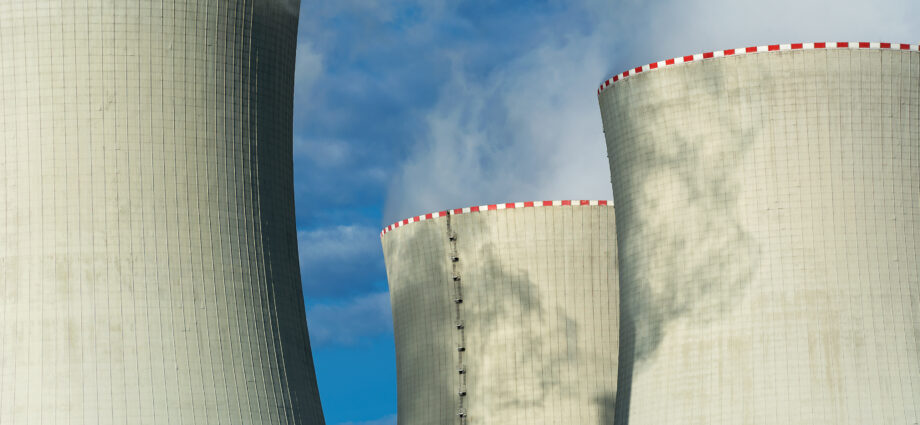
After reportedly deliberating since 2005, Poland is making the move away from coal which at the moment provides 69% of its power
by David Bass
September 26, 2023
The Polish Climate and Environment Ministry has issued an environmental permit for the country’s first nuclear power plant, Climate Minister Anna Moskwa announced according to local media.
The permit was issued following a one-and-a-half-year assessment by the Polish General Directorate for Environmental Protection (GDOS), which concluded that the building and operations of the plant would not harm the environment, and assured that its operation would be closely monitored.
Warsaw plans to build its first nuclear power plant on the Baltic coast by 2033. Construction is set to begin in 2026 and the plant is expected to come online by 2040.
The plan, according to the Polish Nuclear Power Programme, is to build up to six reactors in two or three locations that would be able to power almost eight million homes.
“This is a milestone in the implementation of an investment that is crucial from the point of view of energy security,” Climate and Environment Minister Anna Moskwa said.
The Coal Problem
At present, 35.4% of the world’s electricity comes from coal. In Poland, this number stands at 69%.
Although used for many years as a cheap and reliable source of energy, coal use is very contentious environmentally. Firstly, the process of mining coal is destructive to the environment, as it is located deep underground. Often whole areas or mountainsides have to be destroyed to access coal deposits.
Air pollution is also a major issue. Coal burning emits carbon monoxide, leading to respiratory issues. It also emits mercury and lead which are harmful. Acid rain is also caused when emissions from coal plants mix with the atmosphere and fall to earth as rain. This can be devastating to wildlife, forests, and rivers.
Finally, coal burning is a major source of carbon dioxide gas entering the atmosphere, contributing on a large scale to climate change.
The Oder River Emergency
One big issue for the use of coal by Poland is the mass die-off of fish in the Oder River. In August 2022, 300 tonnes of dead fish were recovered from the river that runs along the border with Germany.
Environmental group Greenpeace says that this is a direct result of wastewater discharge from coal stations leading to dangerous algae that harm marine life. This is caused by excessively high salinity of the water from the waste discharge.
“We hypothesise that the source of the high salinity levels is most probably brine waters pumped from Upper Silesia into the Oder and the Vistula,” said Leszek Pazderski of Nicolaus Copernicus University in Torun, the author of the tests and a Greenpeace expert.
The situation is so serious that Greenpeace has called on the government to establish a national park reserve on parts of the waterway to protect it from contamination and introduce stricter regulations.
With the massive damage caused by coal use, it is easy to see why Poland is turning to alternative sources of energy. But is nuclear power the answer?
Is nuclear power the answer to Poland’s coal use issues?
Nuclear energy has both advantages and disadvantages. It is a clean energy source with low emissions and is reliable and efficient.
It takes up relatively little land and is a reliable source of high energy output. Nuclear power stations use a minuscule amount of fuel to generate the same amount of electricity that a coal or gas power station would (1 kg of uranium = 2.7 million kg of coal).
In addition, power from nuclear energy can be generated 24 hours a day and isn’t dependent on the weather, like wind and solar power tend to be. Despite its perception as a toxic way of producing energy, its operations produce zero carbon emissions and don’t produce other noxious greenhouse gases either.
The disadvantage is that it generates waste that poses serious environmental issues when being disposed of. Depending on its classification, nuclear waste is either recycled or stored under water for at least five years, then put into dry storage, or placed in canisters which in turn are placed in tunnels and sealed with rocks and clay.
Nuclear energy also relies on Uranium as a source of fuel, which is a finite resource, which is why Nuclear energy is classed as non–renewable.
The complexity of the technology also means that there is a high upfront cost and relatively long construction time to get nuclear plants up and running.
Project Phoenix
At the COP27, the UN Climate Change Conference in Sharm El-Sheikh, Egypt, US Special Presidential Envoy for Climate John Kerry announced the launch of Project Phoenix, a revolutionary initiative to help Central and Eastern European countries turn coal plants into Small Modular Reactors (SMR).
As the US Government explains, Project Phoenix aims to “accelerate the transition in Europe of coal-fired plants to SMRs while retaining local jobs through workforce retraining” by providing “direct U.S. support for coal-to-SMR feasibility studies and related activities in support of energy security goals for countries in Central and Eastern Europe.”
SMRs are much smaller than nuclear power plants, but can potentially produce large amounts of power. As such, they are more flexible and scalable, and can be built wherever energy is needed. They also requires less investment and have strong safety and security features.
Project proposals from Czechia, Slovakia, and Poland will participate in Project Phoenix and will receive support for coal-to-SMR feasibility studies.
There is much optimism about these projects, with the Romanian government describing SMRs as “the newest, safest and cleanest nuclear technology.”
With Poland opening up to Nuclear power, and the implementation of Project Phoenix, it looks like nuclear power will increasingly play a big part in the energy mix powering Europe.
Subscribe to our newsletter.
This article was originally published on IMPAKTER. Read the original article.

